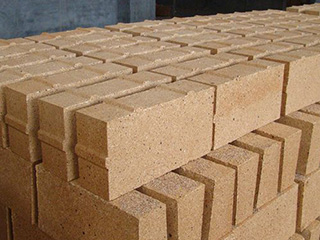Refractory bricks are an essential component of many high-temperature applications. They are used to line the furnaces and kilns that are used in industries such as steel manufacturing, cement production, and glass making. Refractory bricks are chosen for their ability to withstand extremely high temperatures, resist thermal shock, and maintain their shape and integrity even under harsh conditions. In this article, we will explore the importance of refractory bricks for high-temperature applications and the different types of refractory bricks used in industry.

The Importance of Refractory Bricks
Refractory bricks play a critical role in high-temperature applications because they help to protect the equipment and structures from the harsh conditions present during the process. For example, in steel manufacturing, the temperature inside the furnace can reach up to 1600°C. Refractory bricks are used to line the furnace walls, roof, and floor to prevent the steel from melting or damaging the furnace.
In addition to their ability to withstand high temperatures, refractory bricks also have excellent thermal shock resistance. Thermal shock is a phenomenon that occurs when a material experiences rapid temperature changes. This can cause cracking, spalling, or even complete failure of the material. Refractory bricks are designed to resist thermal shock, ensuring that they remain intact even when exposed to extreme temperature fluctuations.
Types of Refractory Bricks
There are several different types of refractory bricks that are used in high-temperature applications. The most common types include:
1.Fireclay Bricks: Fireclay bricks are made from a mixture of clay and other materials, such as kaolin and alumina. They are widely used in industries such as steel manufacturing and cement production. Fireclay bricks have excellent resistance to thermal shock and can withstand temperatures up to 1700°C.
2.High Alumina Bricks: High alumina bricks are made from a high percentage of alumina (usually above 45%). They are commonly used in industries such as glass manufacturing and chemical processing. High alumina bricks have excellent resistance to chemical attack and can withstand temperatures up to 1800°C.
3.Magnesia Bricks: Magnesia bricks are made from magnesium oxide and are used in industries such as steel manufacturing and non-ferrous metal processing. Magnesia bricks have excellent resistance to corrosion and can withstand temperatures up to 2000°C.
4.Silica Bricks: Silica bricks are made from silica and are used in industries such as glass manufacturing and ceramic production. Silica bricks have excellent resistance to thermal shock and can withstand temperatures up to 1700°C.
5.Zirconia Bricks: Zirconia bricks are made from zirconium oxide and are used in industries such as aerospace and electronics. Zirconia bricks have excellent resistance to thermal shock and can withstand temperatures up to 2400°C.
Benefits of Refractory Bricks
The use of refractory bricks offers several benefits in high-temperature applications. Firstly, refractory bricks provide excellent insulation, which helps to reduce heat loss and energy consumption. This can result in significant cost savings for industries that rely on high-temperature processes. Secondly, refractory bricks have a long lifespan, which means they do not need to be replaced frequently, reducing downtime and maintenance costs. Finally, the use of refractory bricks can improve the quality of the end product. For example, in steel manufacturing, the use of refractory bricks can prevent the steel from oxidizing, resulting in a higher quality final product.
Conclusion
In conclusion, refractory bricks are an essential component of many high-temperature applications. They are used to protect the equipment and structures from the harsh conditions present during the process and offer several benefits, including excellent insulation, a long lifespan, and improved product quality. The selection of refractory bricks will depend on the specific requirements of the industry and the process. It is important to choose the right type of refractory brick to ensure that it can withstand the temperatures and conditions present in the application.
Regular maintenance of refractory bricks is also crucial to ensure their longevity and effectiveness. Over time, refractory bricks can become damaged due to thermal shock, chemical attack, or mechanical stress. Regular inspection and repair can help to prevent any serious damage to the equipment or structures.
In addition to refractory bricks, other refractory materials such as castables, mortars, and coatings can also be used in high-temperature applications. These materials offer different properties and advantages depending on the specific needs of the industry and process.
Overall, the use of refractory bricks and other refractory materials is critical in high-temperature applications, ensuring the safe and efficient operation of equipment and structures. The selection and maintenance of refractory materials should be given careful consideration to ensure their effectiveness and longevity.
Contact: Mgr. Han
Phone: 0086-13589497465
Email: 1255953279@qq.com
Add: Industrial Area of Lingzi Town,Zichuan District,Zibo City, Shandong,China